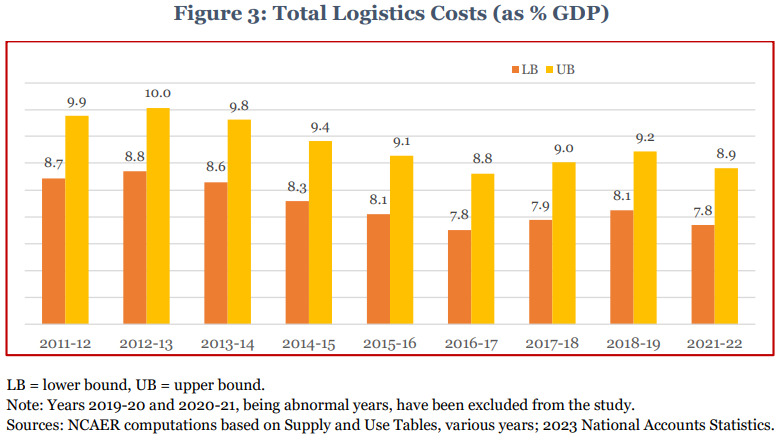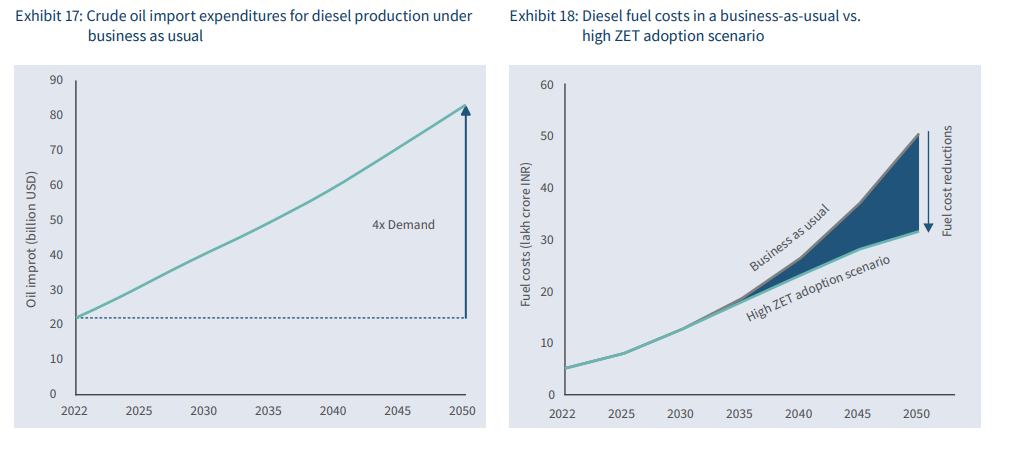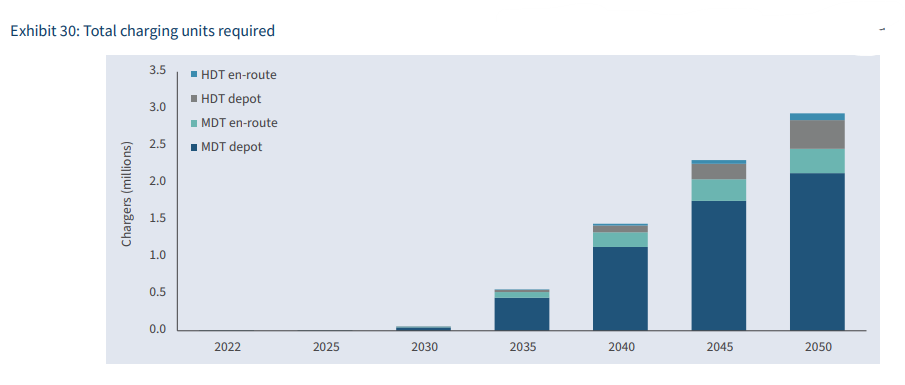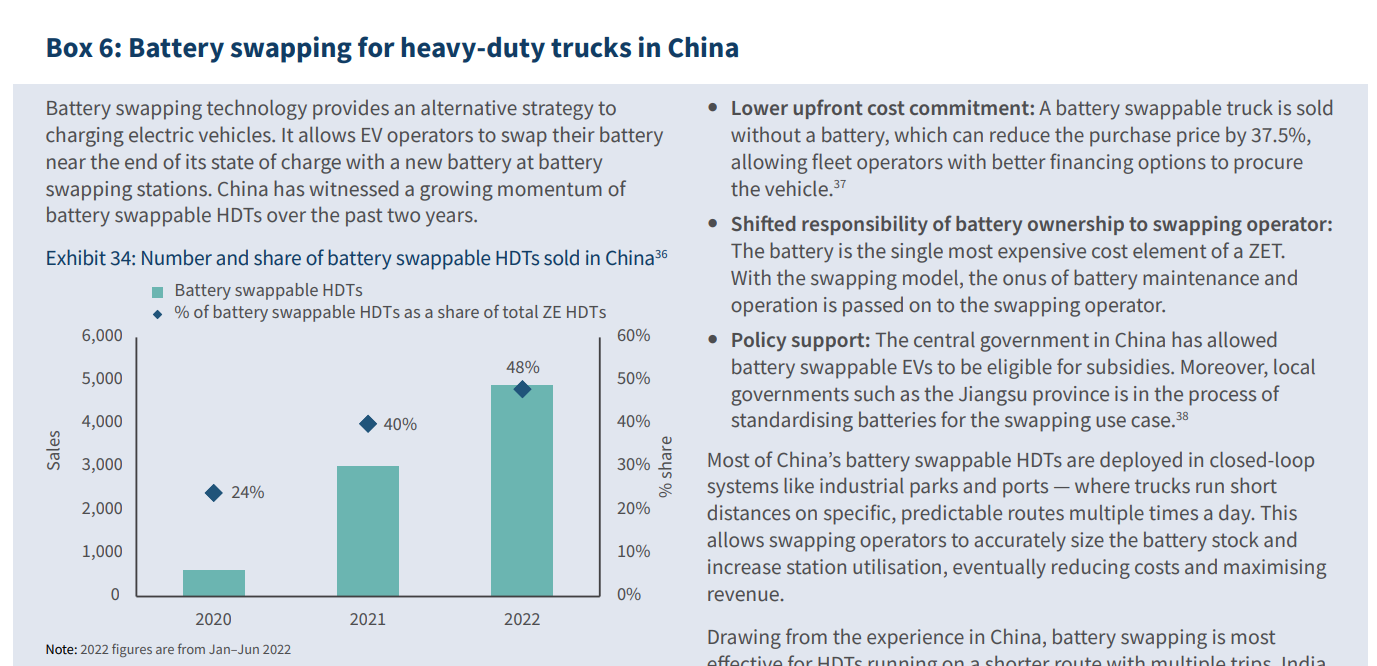Trucking On for A Green India
As India sets its destination to Zero Emissions, the road has a few potholes that need to be taken care of.
The Government of India recently released the Zero Emission Trucking Advisory. Turns out, as the 4th largest in the world, India’s trucking industry is a double-edged sword!
On one hand, it is responsible for carrying 70% of the country’s domestic freight demands, which is about 2.2 trillion tonne-km of freight. On the other hand, despite being just 3% of all vehicles, the Indian trucking industry contributes to over one-third of transport-related carbon dioxide (CO2) emissions.
Apart from CO2, the trucking industry is also responsible for 53% of Particulate Matter (PM) emissions. Trucking also led to 1.6 million tonnes of Nitrous Oxide emissions in 2021.
With India cruising on the fast track of development, the trucking industry is naturally expected to grow to meet the nation’s growing demand. From 4 million in 2022, the number of trucks on Indian roads is expected to grow more than 4x, reaching 17 million trucks by 2050!
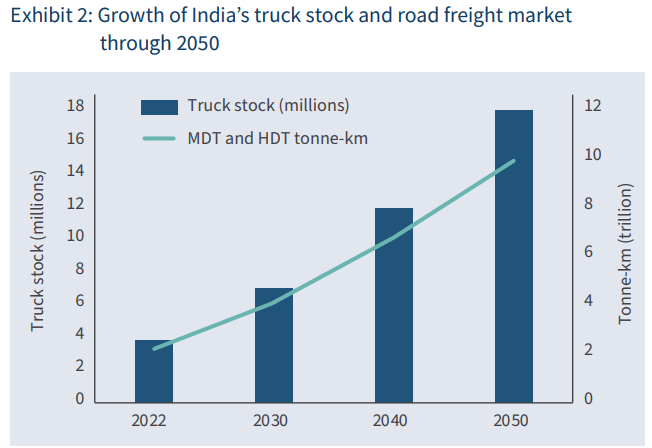
Before you go whooping for joy about the country’s growth, remember the double edge. This increase in the national truck fleet would also mean that the emissions would go up as well. Not only this, the current growth trajectory also increases the country’s dependence on fuel imports.
The logistics costs would rise in tandem with the growth of the trucking industry too. India’s aggregate trucking logistics costs stood at 7.8%–8.9% of GDP for 2021-22!
So, the name of the game is Zero Emissions, and not just India, but the entire world needs to be a player. For now, though, let’s focus on India switching from Internal Combustion Engine (ICE) trucks to Electric trucks.
So, apart from having a healthy planet to function in, what are the other benefits of going zero emissions? What’s the cost of such a transition?
Well, as far as costs are concerned, apart from the capital cost of buying electric trucks, the post-purchase costs are all comparatively lower than ICE trucks.
As you can see, electricity is a cheaper fuel alternative to diesel. Due to this, electric trucks end up becoming a cheaper alternative to ICE trucks that use diesel over their lifetimes.
So, if electric trucks help achieve zero emission targets, and are cheaper in the long run, which would mean more profits for the freight/transport industry, then why is nobody switching? There must be a missing piece.
That there is, and it’s refuelling.
You see, ICE vehicles have been a norm for the longest time, and adequate refuelling infrastructure exists to keep these trucks running across the country without a hitch. Electric vehicles (personal and commercial alike), do not have this luxury.
So, if India achieves an 86% Zero Emissions Truck (ZET) sales penetration by 2050, it would need to match the infrastructure needed to run these vehicles. By 2050, these vehicles would need upwards of 531 terawatt-hours (TWh) of energy for charging.
This would mean that India would need to establish over 2.5 million charging stations by 2050.
Currently, there are only three major OEMs in the electric truck segment- Tata Motors, Ashok Leyland, and Volvo-Eicher.
Together, they have an 88% market share.
A push in the zero emissions direction, if successful, could be beneficial for these players.
Other players that could benefit from the untapped charging station segment would be Tata Power, Adani Green, Amara Raja Batteries, Exide Industries and more.
An alternative to building charging stations would be using swappable batteries. China has already seen a growing number of trucks with swappable batteries in the last two years. However, this is not a solution, but just a temporary fix.
How successful do you think this noble endeavour to go green would be? Do you foresee any other troubles that the zero-emissions movement could face?



